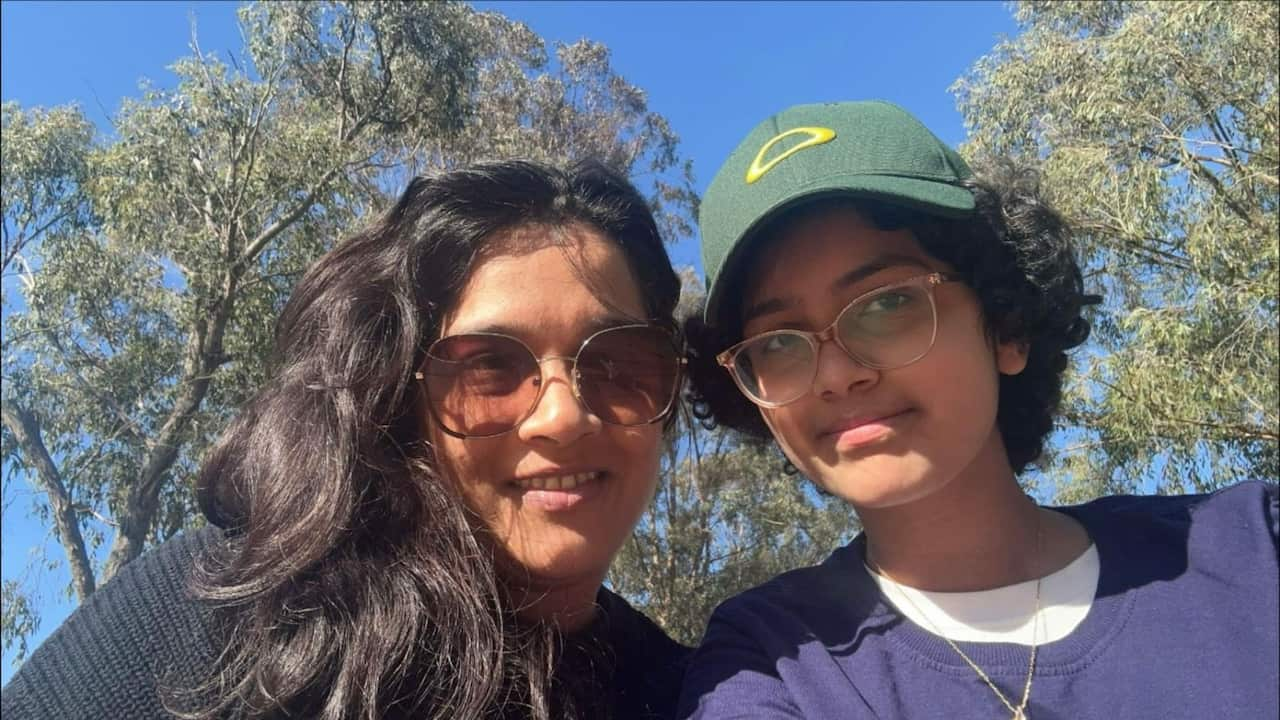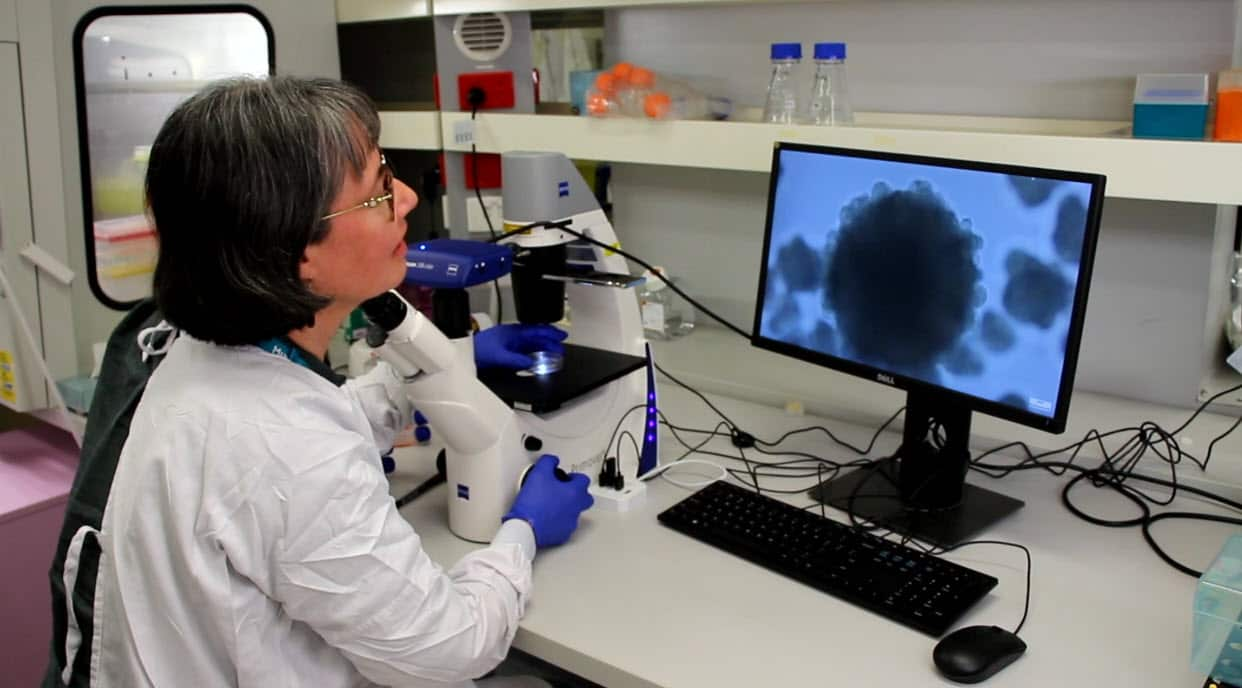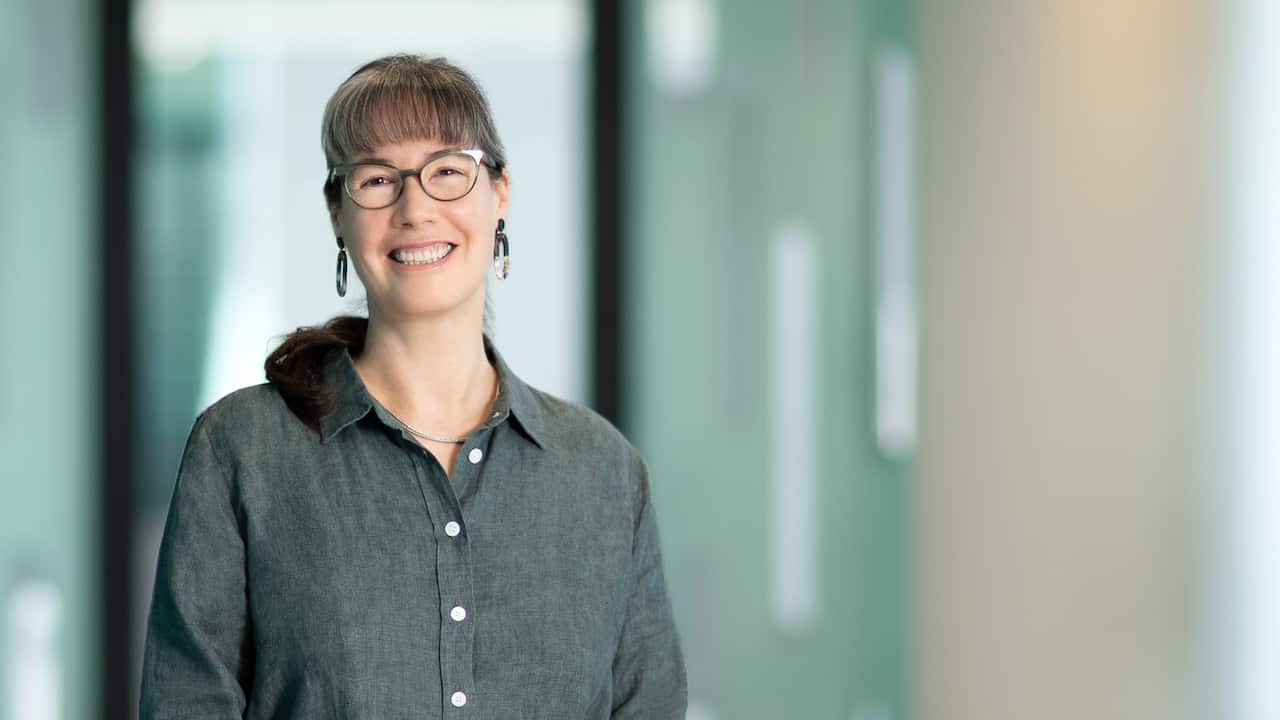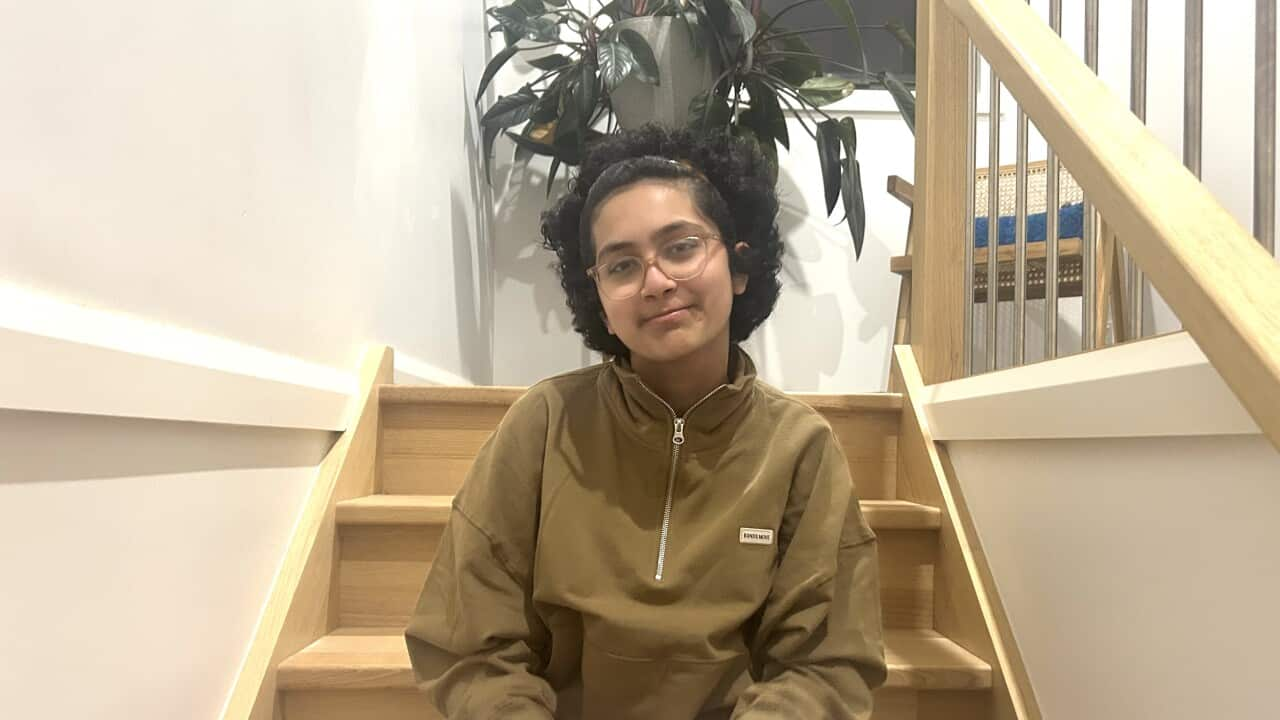Melbourne-based Gaurav and Sonali Mahajan were in India when they first noticed bruises on their daughter’s legs. Riya, who was 11 at the time, had also been suffering fevers and feeling fatigued.
Tests revealed she had extremely low levels of platelets in her blood. The normal range is between 150,000 to 450,000. Riya’s were at 4,000.
The discovery fast-tracked the family’s return to Australia. They boarded a flight to Melbourne once Riya’s condition was considered stable enough for her to fly.
“As soon as we got off the flight we went straight to the hospital,” Gaurav told SBS News.
Sonali Mahajan ended up being her daughter’s donor, despite being a 50 per cent match. Source: Supplied
Riya was eventually diagnosed with aplastic anaemia, a rare and serious blood disorder where the bone marrow fails to produce enough blood cells.
“It was very stressful and it was a bit of a shock for everyone in the family. [It was] just out of the blue. She wasn’t unhealthy or anything, she was very normal,” Gaurav said.
Riya started therapy at Melbourne’s Royal Children’s Hospital within days of her return to Australia.
Gaurav said his daughter wasn’t responding well to the medications, and she was needing transfusions every second day. A bone marrow transplant was eventually recommended, but finding a perfectly matched donor proved a major challenge.
After about four months, following specialist advice, Riya’s mother Sonali became her daughter’s donor, despite being just a 50 per cent match.
Riya had the transplant last June and after the operation, she had to stay in isolation for three months. Without a perfect donor match, her platelet count took more time to return to normal, she required longer immunosuppressive therapy and she was more susceptible to infections.
“I think besides the physical hardship, which the child goes through, the mental aspect is also quite significant, [being] isolated from the rest of the world,” Gaurav said.
Australian research could transform bone marrow transplants
A bone marrow transplant is often a key part of lifesaving treatment for childhood blood disorders, but, as in Riya’s case, not all children can find a perfectly matched donor.
Now, Australian researchers have made a global-first breakthrough that could pave the way for personalised treatments.
Researchers at the Murdoch Children’s Research Institute (MCRI) in Melbourne have created blood stem cells in the lab that closely resemble those in the human body.
“We have figured out a way to generate blood stem cells from human pluripotent stem cells. Essentially blood stem cells in a dish,” lead-researcher and MCRI associate professor Elizabeth Ng told SBS News.
“It means that we can make blood stem cells from patient iPS cells, therefore we can make blood cells that are perfectly matched to a patient.”
Researchers at the Murdoch Children’s Research Institute (MCRI), have created blood stem cells in the lab that closely resemble those in the human body.
She said this means the patient would have far less severe side effects.
“They will be able to recover and rebuild a blood system following treatment without any of the side effects usually associated with blood stem cells that they get from a donor.”
A pluripotent stem cell is an embryonic stem cell that can divide or develop into many types of cells or tissues in the body and an iPS cell is one that has been reprogrammed back into the pluripotent state.
MCRI professor Andrew Elefanty is also involved in the research and said it also addresses donor shortages.
“In some cases, it’s very difficult for patients to find an appropriate donor. This is an additional way, in which, if you can use cells made from your own stem cells, that circumvents that problem,” he said.
“And this probably becomes more important if you consider the fact that the bone marrow or donor registries may be limited to particular ethnic and racial groups. So this treatment that we are developing offers an opportunity to treat essentially all people.”
MCRI professor Ed Stanley said the findings could lead to new treatment options for a range of blood disorders.
“Red blood cells are vital for oxygen transport and white blood cells are our immune defence, while platelets cause clotting to stop us bleeding,” he said.
“Understanding how these cells develop and function is like decoding a complex puzzle.”
Clinical trials expected in five years
In the study, immune-deficient mice were injected with the lab-made human blood stem cells.
The research found the blood stem cells became functional bone marrow at similar levels to that seen in umbilical cord blood cell transplants — a proven benchmark of success.
The researchers also found that the lab-grown stem cells could be frozen before being transplanted into the mice mimicking the preservation process that happens before human patients receive these transplants.
Murdoch Children’s Research Institute’s associate professor Elizabeth Ng is leading the stem cell research. Credit: Graeme Furlong
Elefanty said the next stage, likely in about five years, would be conducting a phase one clinical trial to test the safety of using these lab-grown blood cells in humans.
“In reality, the way that we’ll find out that these cells actually work will be when we come to the clinical trial, and that’s the way of proving in a very controlled environment that the cells are safe and that the cells work,” he said.
“We have to be so careful that we don’t do any harm. The treatments that we think work well in small animals have to work well in people — that’s really quite a big jump, and I think that’s why it takes longer than perhaps people would think.”
‘Life-changing’ for children
After a difficult few years, Riya, now 13, is recovering well, her dad said.
“[She’s] a lot better. Her platelets are slowly creeping up still. She started going to school early this year, and she’s doing everyday things.”
Her mother Sonali said the new research is a “remarkable achievement.
“The fact that one day there could be targeted treatments for children with leukaemia and bone marrow failure disorders is life-changing,” she said.
Gaurav Mahajan and his daughter, Riya. Source: Supplied
Gaurav said: “Those three or four months when we were waiting for a [donor] match … it’s a very daunting process.”
“[The research] is going to be a great blessing for kids in future.”




